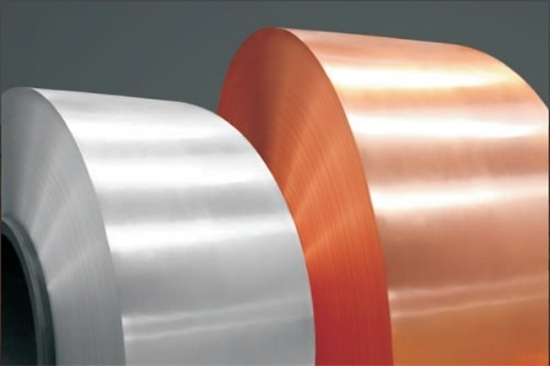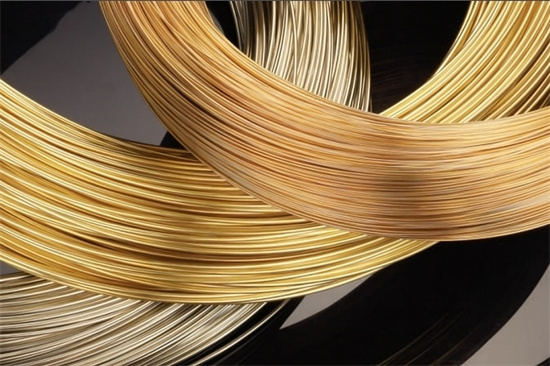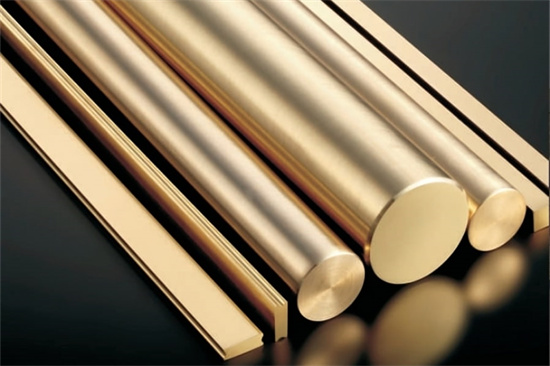


High Plasticity Nickel Silver: The Best Alloy for Durability and Formability
Low MOQ
Provide low minimum order quantity to meet different needs.
OEM & ODM
Provide customized products and design services to meet unique customer needs.
Adequate Stock
Ensure fast order processing and provide reliable and efficient service.
Customer Satisfaction
Provide high quality products with customer satisfaction at the core.
share this article
Table of Contents
In the world of metallurgy, high plasticity nickel silver stands out as a key material known for its versatility and strength. While the name might suggest that this alloy contains silver, it’s actually a combination of nickel, copper, and zinc, with no actual silver content. High plasticity nickel silver is highly valued for its malleability, corrosion resistance, and aesthetic appeal that mimics silver without the high cost. In this comprehensive guide, we will explore every aspect of this remarkable alloy, including its composition, properties, applications, pricing, and much more.
Overview of High Plasticity Nickel Silver
Let’s start with a quick overview. High plasticity nickel silver is an alloy that primarily consists of copper, nickel, and zinc. What sets this alloy apart is its exceptional formability (plasticity), making it ideal for a wide range of applications, from musical instruments to industrial components. High plasticity refers to the material’s ability to undergo significant deformation without breaking, allowing it to be shaped into complex forms.
Key Characteristics of High Plasticity Nickel Silver:
- High malleability: Can be easily shaped into intricate designs.
- Corrosion-resistant: Suitable for environments where exposure to moisture or chemicals is common.
- Aesthetic appeal: Its silver-like sheen makes it popular for decorative purposes.
- Non-magnetic: Unlike pure nickel, this alloy is non-magnetic, making it useful in specific applications.
- Good workability: Easy to machine, solder, and form, reducing manufacturing costs.
| Property | Details |
|---|---|
| Primary Composition | Copper, Nickel, Zinc |
| Silver Content | 0% |
| Corrosion Resistance | High, especially in moist environments |
| Color | Silver-like appearance |
| Workability | Excellent for casting, machining, and forming |
| Applications | Jewelry, musical instruments, decorative items, industrial components |
| Density | Approximately 8.7 g/cm³ |
| Melting Point | 1000°C – 1050°C |
| Magnetic Properties | Non-magnetic |
Composition and Properties of High Plasticity Nickel Silver
The exact composition of high plasticity nickel silver varies depending on the specific grade and intended application, but the primary elements remain the same: copper, nickel, and zinc. The absence of silver makes this alloy more affordable while still maintaining its signature appearance.
Detailed Composition Breakdown
The proportions of copper, nickel, and zinc can be adjusted to enhance certain properties like strength, corrosion resistance, or ductility. A typical composition might look like this:
| Element | Percentage (%) |
|---|---|
| Copper (Cu) | 55-65% |
| Nickel (Ni) | 10-25% |
| Zinc (Zn) | 15-30% |
Physical and Mechanical Properties
| Property | Value |
|---|---|
| Tensile Strength | 400-600 MPa |
| Yield Strength | 200-300 MPa |
| Hardness (Brinell) | 80-150 HB |
| Electrical Conductivity | Low (around 5-8% of copper’s conductivity) |
| Thermal Conductivity | Moderate (better than steel, lower than pure copper) |
| Elongation at Break | 20-35% |
The high plasticity of this alloy means it can withstand significant deformation before breaking, making it a popular choice in industries where durability and formability are critical.
Applications of High Plasticity Nickel Silver
Thanks to its unique blend of properties, high plasticity nickel silver has found its way into a wide array of industries. Whether being used for aesthetic purposes like jewelry or for its mechanical strength in industrial applications, this material is incredibly versatile.
Common Uses of High Plasticity Nickel Silver
| Application | Details |
|---|---|
| Musical Instruments | Used in wind instruments like flutes, trumpets, and saxophones due to its acoustics and workability. |
| Jewelry | Popular for rings, necklaces, and bracelets because of its silver-like appearance and hypoallergenic properties. |
| Decorative Items | Frequently used in home décor items such as door handles, picture frames, and sculptures. |
| Marine Components | Its excellent corrosion resistance makes it suitable for marine hardware like bolts, screws, and fittings. |
| Industrial Components | Used in mechanical parts where a combination of strength, corrosion resistance, and formability is required. |
| Coins and Medals | Commonly used in currency due to its durability and aesthetic appeal. |
Specifications, Sizes, and Standards for High Plasticity Nickel Silver
High plasticity nickel silver is available in various forms, including sheets, rods, wires, and tubes. Each form must meet specific industry standards to ensure optimal performance in its intended application. It’s essential to select the right size and grade according to project requirements.
Standard Sizes and Forms
| Form | Available Sizes | Industry Standards |
|---|---|---|
| Sheet | Thickness: 0.3 mm to 5 mm | ASTM B122 |
| Rod | Diameter: 1 mm to 100 mm | ASTM B139 |
| Wire | Diameter: 0.1 mm to 5 mm | ASTM B206 |
| Tube | Diameter: 10 mm to 200 mm | ASTM B466 |
Standards vary depending on the region and application, so it’s important to consult with the manufacturer or supplier to ensure compliance with local regulations.
Suppliers and Pricing of High Plasticity Nickel Silver
Due to the widespread use of high plasticity nickel silver, there are numerous suppliers across the globe. Pricing can fluctuate based on market conditions, alloy composition, and order quantities. Generally, high plasticity nickel silver is more affordable than precious metals like sterling silver, but more expensive than basic copper alloys.
Leading Suppliers and Pricing Estimates
| Supplier | Location | Price per kg | Minimum Order Quantity |
|---|---|---|---|
| ABC Alloys Inc. | USA | $25 – $35 | 100 kg |
| EuroMetals Ltd. | Europe | $22 – $32 | 50 kg |
| MetalWorks International | Asia | $26 – $36 | 200 kg |
| Allied Metal Distributors | Global | $24 – $34 | 500 kg |
It’s essential to note that prices can vary significantly based on the grade of the alloy, the supplier’s location, and whether you’re purchasing standard or custom-sized products.
Advantages and Disadvantages of High Plasticity Nickel Silver
When comparing high plasticity nickel silver to other materials, it’s important to consider both its strengths and limitations. This section will provide a detailed comparison to help you determine whether this alloy is the right choice for your specific needs.
Advantages vs. Disadvantages
| Advantages | Disadvantages |
|---|---|
| Highly formable – excellent for complex shapes | Lower conductivity compared to pure copper |
| Corrosion-resistant in harsh environments | More expensive than basic copper alloys |
| Aesthetic appeal similar to silver | Not as strong as stainless steel |
| Non-magnetic – suitable for specialized applications | Heavier than aluminum alloys |
| Good machinability for manufacturing processes | Limited heat resistance at very high temperatures |
FAQs About High Plasticity Nickel Silver
| Question | Answer |
|---|---|
| What is high plasticity nickel silver? | A copper-based alloy with nickel and zinc, known for its malleability and silver-like appearance. |
| Is high plasticity nickel silver durable? | Yes, it’s highly durable and corrosion-resistant, making it ideal for various applications. |
| Can it be used in jewelry? | Absolutely. Its silver-like appearance and hypoallergenic properties make it popular in jewelry. |
| How does it compare to sterling silver? | While it mimics the appearance of sterling silver, it’s much more affordable and durable. |
| Is it suitable for marine applications? | Yes, its corrosion resistance makes it a great choice for marine environments. |
| Can it be soldered or welded? | Yes, high plasticity nickel silver is easy to solder and weld, making it versatile for manufacturing. |
| What temperatures can it withstand? | It can handle moderate temperatures but may not perform well in extremely high-heat environments. |
Conclusion
High plasticity nickel silver is a remarkable alloy that combines the beauty of silver with the strength and durability of copper, nickel, and zinc. Its high formability makes it ideal for intricate designs, while its corrosion resistance ensures long-lasting performance in various environments. From jewelry to industrial components, this versatile alloy continues to be a popular choice across multiple industries.
Whether you’re looking for an affordable alternative to sterling silver or a durable material for industrial use, high plasticity nickel silver offers the perfect balance of aesthetics, strength, and cost-effectiveness. By understanding its composition, properties, applications, and pricing, you’re well-equipped to make the best decision for your specific needs.
Maybe you want to know more about our products, please contact us
Get Latest Price
About Met3DP
Product Category
HOT SALE
CONTACT US
Any questions? Send us message now! We’ll serve your request with a whole team after receiving your message.

Metal Powders for 3D Printing and Additive Manufacturing
COMPANY
PRODUCT
cONTACT INFO
- Qingdao City, Shandong, China
- [email protected]
- [email protected]
- +86 19116340731








